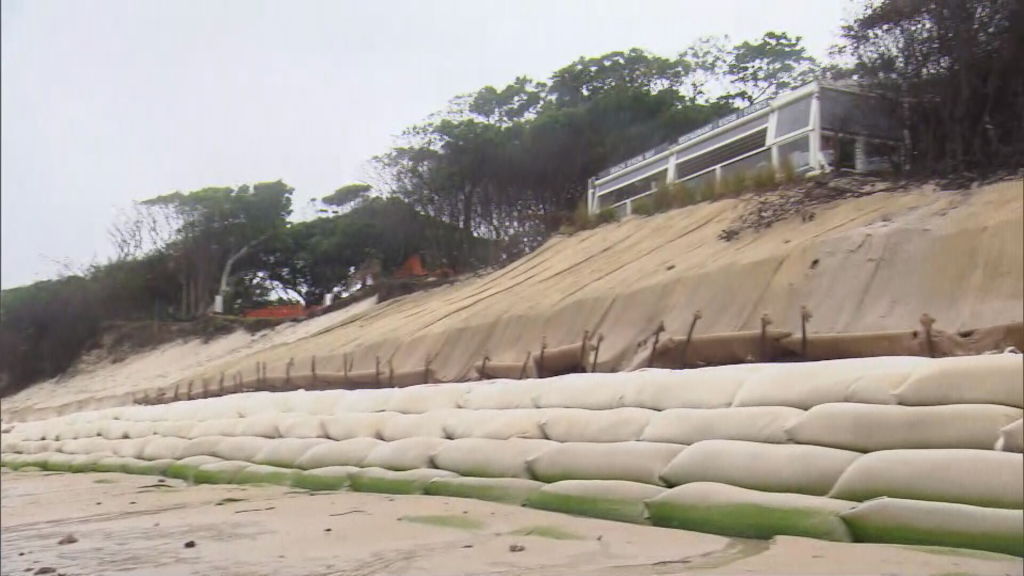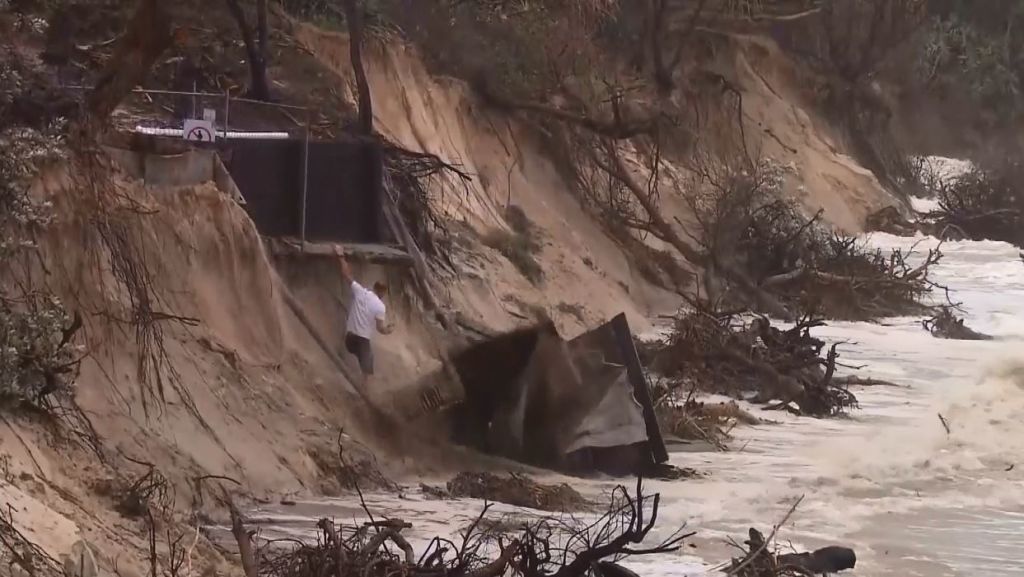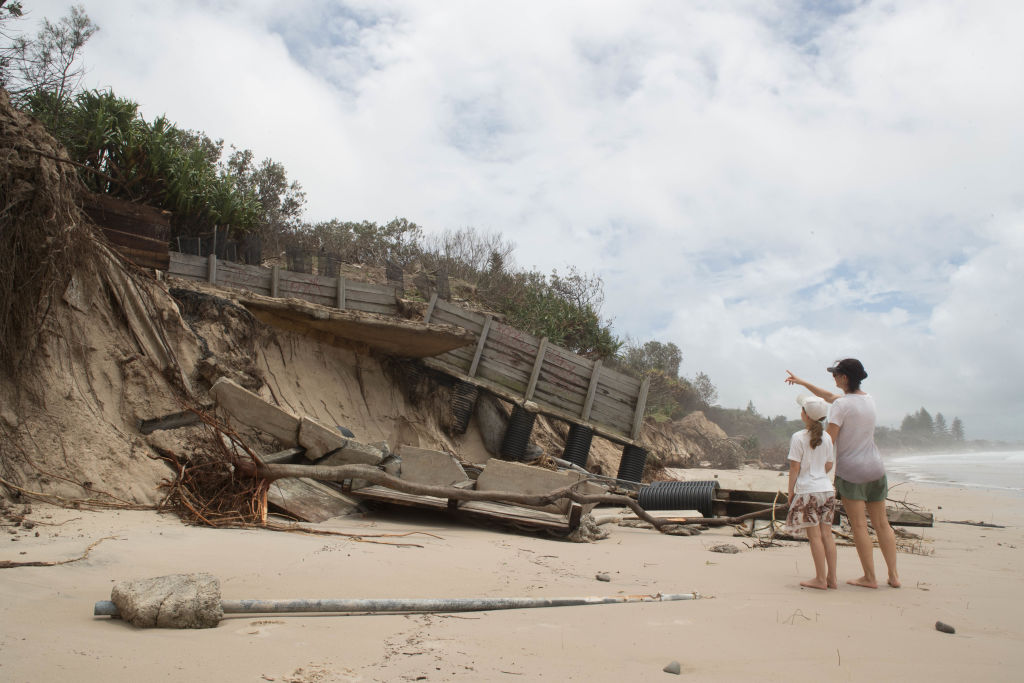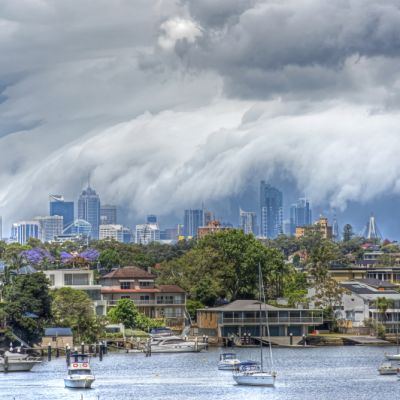Extreme weather: Waterfront properties face rising risks of coastal erosion, experts warn

Properties perched on the absolute waterfront face rising risks of coastal erosion, experts warn, an issue laid bare by this week’s east coast storms.
As sea levels rise and extreme weather events unfold, mitigation measures such as sea walls will become more important – and eventually local communities may have to consider relocating, researchers said.
Heavy rain in northern NSW and south-east Queensland this week combined with high tides and strong winds, flooding roads and putting a number of homes on standby to evacuate.
Byron Bay’s beaches suffered heavy erosion and king tides, with a walkway collapsing into the sea and a beachside restaurant sandbagged with help from local council to protect it.

“Coastal erosion is a very clear threat,” University of Sydney Associate Professor in the School of Geosciences Ana Vila Concejo said.
“This year we have a La Nina year where we typically have more storms and so probably the risks of erosion are higher.
“With climate change we are going to have changes in storms, so we are going to have intense storms with slight changes in direction… we have parts of the beach that are typically protected but are suddenly exposed to waves that are coming from another direction.”
The overlap of large storms and rising sea levels makes the risk worse, she said.
“Sea level rise is quite slow and perhaps imperceptible,” she said.
“[But] a few centimetres, with large waves in a storm, is translating many metres inland.”
Mitigation measures could range from owners of waterfront properties placing bags of sand in front of their properties to the expensive option of building a sea wall, she said. Adding more sand to the beach can help, but it can also be difficult to work out where to get the sand from.
“Some councils in the past have tried buying those properties back but the problem is the price of those properties is so high the council cannot buy them all,” she said.
“At some point we’re going to have a very honest look… And say, ‘Is this worth saving or do we need to relocate?’”
Communities could draw a line behind which they allow new construction, for example.
She acknowledges the complex human reactions to the issue, as many beachfront property owners on the NSW coast are not wealthy but have lived there a long time, and says if she owned such a house she would likely be fighting for it.
She pointed to Jimmys Beach on the mid-north coast, which experienced erosion earlier this year.
“I could not understand that houses that are about to be eaten by the sea… How could they go up in price every year? It should be the other way around,” she said.
“Sometimes it is people being attached to their grandfather’s house. It’s not all wealthy people, it’s not all people who want to have status.
“For some people it’s just really their home.”

Anyone thinking of buying beachfront property may need to consider the risks, said Sarah Boulter, senior research fellow at the National Climate Change Adaptation Research Facility at Griffith University.
Coastal erosion is a natural part of beaches, which tend to erode and build back up again, but risks are worsening as sea levels rise, she said.
“If your sea levels are rising and you add high waves to the storm… that’s increasing the distance those waves can travel inland, because they’re higher,” she said.
“You don’t generally have severe impacts of coastal erosion on a normal day, but when you have a storm associated with it and then you add sea level rise that’s when you start to see increasing risks and more severe impacts.
“Climate change is worsening what we already had.”
As risks increase in an area it becomes more expensive to insure properties, she said.
“If you’re looking at buying a property you can certainly understand what risk is posed to your property and understand if that’s a risk you’re willing to accept,” she said.
“It might mean more expensive insurance or no insurance.
“You might only get to enjoy it for the next 20 or 30 years.”
The wild weather this week has also brought the risk of floods, and homeowners in flood-prone areas can consider the design of their properties to make them more resilient, said Andrew Gissing, general manager of resilience at consultancy group Risk Frontiers.
Next time they are renovating, he suggests minimising the use of particle board and choosing hardwood instead as it is more water-resistant.
Choosing tiles or hardwood floorboards instead of carpets can make it easier to clean up after flooding.
He suggests having a stock of sandbags that can be filled, making a plan about how to move household items to higher ground, researching where to get flood warnings from (such as the Bureau of Meteorology) and knowing the gauge height at which a property will be inundated or finding out from the local council.
Some homeowners and governments have worked together to raise properties higher, he said, while councils have built levees and installed flood warning systems.
His most important safety advice is not to drive or walk through floodwater.
“Mitigation of natural hazard risk, in particular coastal flooding, is absolutely key to ensuring our risks stay at a level that can be affordable into the future,” he said.
“You can’t build a levee that is going to keep all floods out, you’ve got to establish a risk tolerance for the community.”
We recommend
We thought you might like
States
Capital Cities
Capital Cities - Rentals
Popular Areas
Allhomes
More










